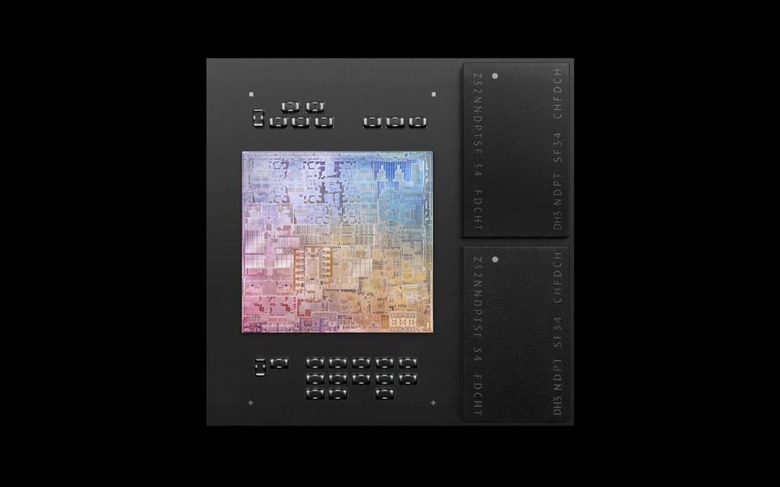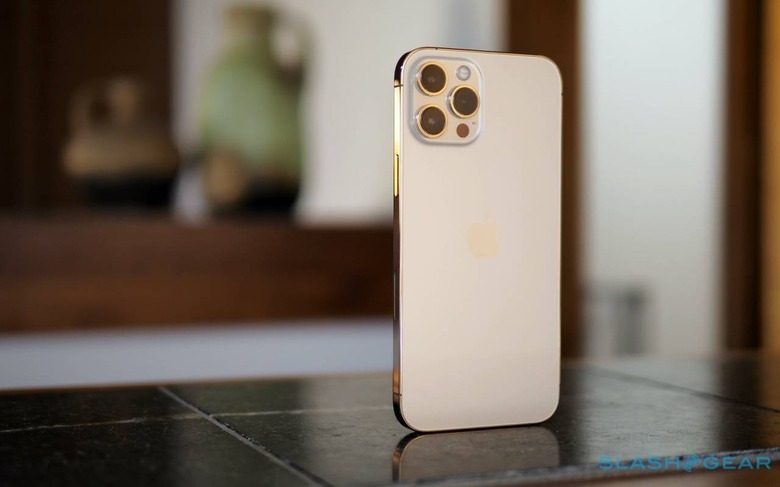Apple Silicon And The 5G Opportunity
Apple may have come out strong with its new Apple M1, the first notebook chipset of its own design, but there's a conspicuous gap in the new MacBook Air and MacBook Pro 13: 5G connectivity. In a year where Apple didn't just adopt 5G in iPhone, but embrace it wholeheartedly by including on every new iPhone 12 series device, the fact that it's not to be found in its new notebooks despite the ARM family resemblance seems like a missed opportunity.
Outwardly, the new MacBooks with M1 look just like their Intel-powered predecessors. Same chassis, same ports; only when you open them up, and see the new key legends on the MacBook Air, do the differences start to become a little more noticeable.
Inside however, there's a lot that's new. Gone are the Intel Core processors, with Apple Silicon in their place. The M1 chipset – with eight CPU cores and up to eight GPU cores – is a not-too-distant cousin of the A14 Bionic found in the latest iPad Air along with the iPhone 12 family.

What that tablet and those phones offer, of course, is the option of embedded cellular connectivity, and it's fair to say that many were hoping that Apple would take the same approach with Apple Silicon. It's not that connectivity has been an afterthought. Both the new MacBook Air and the MacBook Pro 13 have WiFi 6 support now, along with their Bluetooth 5.0 and USB-C ports that now support USB 4.0, and as we make more and more demands from our home networking that's going to make a big difference to those who have upgraded their routers recently.
It's also true that macOS and iOS have long made tethering your Mac to your iPhone as easy as a couple of clicks. All the same, there's a growing interest in having cellular connectivity built-in, rather than feeling like an afterthought.
Battery life with 5G was already a concern for iPhone 12. Apple even has a power management system switched on by default, which automatically rolls back to less intensive 4G LTE if the data situation can live with that. Wireless tethering from your iPhone, on top of 5G, is arguably a step in the wrong direction.

There are a few solid reasons why Apple might have opted not to include it as an available feature in this first generation of M1-based notebooks. Speed to market is one: not only did Tim Cook commit back at WWDC to launching the first Apple Silicon Macs before the end of the year, it seems likely that laptops will be a common holiday season purchase. More of us are working or attending school remotely, and many households are finding they need at least one new computer to cater to that. The Windows notebook rivals that Apple likes to compare and contrast its new Macs with are already on shelves.
Then there are developers, who need Apple Silicon hardware in order to begin testing how their new and existing software will play with chipsets like the M1. Apple has a dev-kit, but that was of limited availability and only ever really a stopgap until the first commercial Macs arrived.
Everything about the new MacBook Air, MacBook Pro 13, and Mac mini shouts that Apple took the easiest possible route to market. That's not a slight: easing into a huge transition like this is sensible, as is making the best use of existing designs. There's plenty of time for genre-upending hardware designs once the initial glow of a new chipset has worn off.

Including 5G would likely have demanded more changes than that accelerated roadmap allowed. 5G antennas aren't easy things to accommodate; if you want to include mmWave support, meanwhile, then that gets even more challenging. Beyond that there are the practical issues of data plans and carrier collaborations, and while Apple has existing relationships for iPhone and iPad, it'll probably take a little time for that to translate to packages for Mac where data demands could theoretically be an order of magnitude higher.
It's hard to imagine that 5G isn't on the near-scale roadmap for Apple Silicon. Always-on apps and services make so much more sense when you have a persistent data connection, and it's a key piece of the overall strategy when you consider iOS and iPadOS apps running on macOS. There is, though, only so much Apple can do alone. While it may have designed the M1 itself, the 5G modems it uses in the iPhone 12 family come from Qualcomm.

Qualcomm already has a strategy for always-connected notebooks, with its Snapdragon series now including a number of variants designed for Arm-based Windows 10 ultraportables. Sales of those haven't exactly set the world alight, at least not as far as anybody involved is saying, though Windows' support for apps intended for Arm rather than x86 chipsets has played a contributory factor there. Apple, clearly, is wasting no time in addressing that hurdle, with macOS Big Sur introducing support for both native and emulated software for the company's own silicon.
In short, there are plenty of moving parts and while 5G might be a nice-to-have it's not a must-have, at least not at this stage of the transition. Apple's product successes have always been much more effective when the company can show us, rather than tell us, why it's a leap forward. For 5G to be part of that, it needs to have a solid foundation of apps and experiences running on Apple Silicon, and like any evolution the biggest ingredient there is time.
